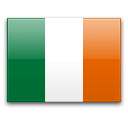 Thorlux is closed for the Christmas break and will re-open on Thursday 2nd January 2025. Merry Christmas!
Thorlux is closed for the Christmas break and will re-open on Thursday 2nd January 2025. Merry Christmas! 
Industry
Industry covers a broad spectrum, from manufacture and assembly areas to heavily industry in dirty, hot and humid environments. Good lighting is very important so the task can be carried out effectively and safely. Appropriate luminaires should be selected to withstand the environmental conditions.
Areas
General Guidance
Whatever the application, the goals are common:
- To provide a lit environment that facilitates accurate and fast work
- To create a safe environment
- To contribute towards worker comfort and wellbeing
This can often be achieved with a three-pronged approach:
- General lighting that is appropriate for the environment and the main work activities
- Localised lighting for specific work areas (such as assembly lines, machine shops, etc.) that have specific lighting needs
- Local task lighting (over work-benches or on and even inside machinery) where a higher illumination level or better quality colour rendering is required. Local lighting is effective for highlighting hazards and obstructions
In this approach attention needs to be paid to the Illuminance Uniformity. Detailed guidance is provided in the CIBSE: SLL Lighting Guide 1 - Industrial Environment
Illumination Levels
Illumination levels for industry are outlined in the CIBSE: SLL Lighting Guide 1 - Industrial Environment 2018 and the CIBSE: SLL Lighting Handbook.
If a specific industry is not listed, it should be possible to find a comparative one and correlate tasks and activities.
Vertical Illumination
Attention needs to be paid to designing a lighting scheme that meets the needs of the tasks being undertaken. It can be an oversimplification to concentrate solely on horizontal illuminance values and ignore the vertical element. Many tasks need good vertical illumination levels in order to operate control panels, read labels, or to recognise facial features for good communication.
The best approach is to use luminaires with a wide distribution, mounted closer together in order to provide good vertical illumination and uniformity.
For more detailed guidance, please see the CIBSE: SLL Lighting Guide 1 - Industrial Environment.
SmartScan Lighting Management
Many industrial buildings benefit from good levels of daylight through rooflights, so significant energy savings can be achieved by installing suitable lighting management.
SmartScan is an ideal system for monitoring industrial lighting because the sensors are incorporated into the luminaires, simplifying installation. The wireless mesh network eliminates the need for signal or control cables, making it ideal for retrofit projects.
SmartScan equipped luminaires will dim and automatically switch based on daylight level, and savings in excess of 50% have been commonly achieved.
SmartScan addressing can also be used to configure a number of zones within a large factory, so lighting usage can be tailored to task requirements whilst maintaining a general level of background and safety lighting.
Find out moreColour Rendering Index
CRI 80 is standard for Thorlux internal luminaires and CRI 70 for external luminaires, making them suitable for most applications. Many luminaires are available to special order with a higher CRI for applications where high quality colour rendition is needed. Please contact your local sales engineer or the sales office for more information.
Environmental Factors
Extremes of temperature and humidity, dusty, corrosive or even explosive atmospheres may exist in industrial premises, so it is essential that suitable luminaires are selected.
- Humid and damp environments need luminaires with an IP rating of IPx5 or IPx6 to ensure that the luminaire is sealed and protected against moisture ingress. Similarly sealed luminaires should be used in environments where the work area may be hosed down for cleaning.
- Low temperatures are not an issue for LED luminaires because LEDs do not face the same issues as fluorescent lamps at low temperatures. Many luminaires are suitable for temperatures down to -20°C, some as low as -40°C.
- Many Thorlux luminaires are suitable for ambient temperatures up to 50°C with no detrimental effect on life-time.
- Luminaires for high temperature environments should be equipped with thermal protection circuitry. This reduces the power output at extremely high temperatures to ensure that the driver temperature is kept with operational parameters.
Please contact your local sales engineer or the technical helpline for more information.
Emergency Lighting
Emergency luminaires should meet the same standard of ingress protection as the general lighting. High and low ambient temperatures can be an issue for batteries in self-contained and maintained luminaires, so please contact our technical helpline for advice.
Illumination Levels. BS 5266-1 recommends that open areas over 60 m² should be illuminated to a minimum of 0.5 lux. Escape routes, whether enclosed or running through the open space, should be illuminated to a minimum of 1 lux.
High risk areas (as determined by risk assessment) should be illuminated to 10% of the normal lighting level, or 15 lux (whichever is the higher) for as long as the risk exists. The primary function is to allow the workforce to make equipment and machinery safe before they evacuate the building.
The Firefly Surface emergency luminaire is available with both area and corridor lenses. The Lexi-65 is a sealed bulkhead luminaire that can be used as an exit sign by the addition of a self-adhesive legend. The Duo-Spot IP65 version is ideal for illuminating an open area. The Comboseal emergency and Visio Pro emergency luminaires are both high output non-maintained luminaires with outputs around 1,000 lumens, making them ideal for greater mounting heights.


























































